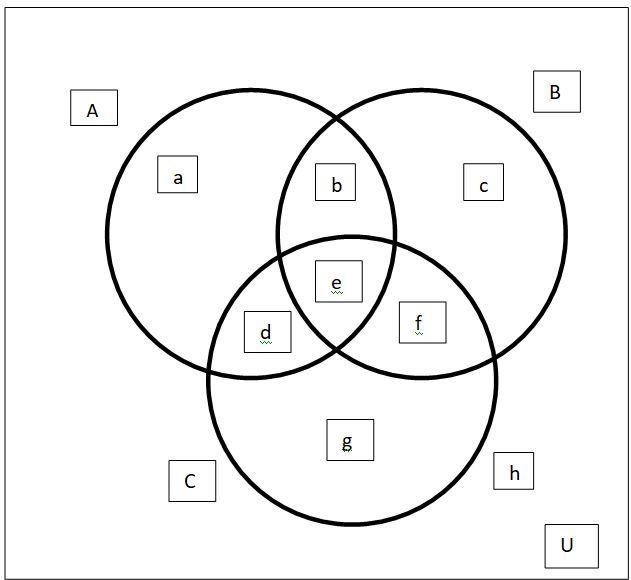
Consider the following statements: For non-empty sets. A, B and C
1.
2.
Which of the statements given above is/are correct?
A) 1 Only
B) 2 Only
C) Both 1 and 2
D) Neither 1 nor 2
Answer
204.6k+ views
Hint: In this question, we have to find which of the given condition is correct. In order to find this concept of Venn diagram is used. Apply concept of Venn diagram on given options to get the correct option.
Formula used: In this question we are going to use the Venn diagram. This diagram give the relation between various set and their subset.
Complete step by step solution: Draw a Venn-diagram taking three intersecting sets A, B and C under a universal set U. After intersection eight regions will be developed.

Now we have
First statement:
LHS contain only a while RHS contain a,d,c
Therefore First statement is wrong
Second Statement:
LHS contain only a and RHS also contain a
Therefore statement second is correct.
Thus, Option (B) is correct.
Note: Here we must remember the algebra used in Venn diagram.
Some important properties of Sets are given below:
A. Idempotent Law is given as
(i) Union of two same sets
(ii) Intersection of two same sets
B. Associative Law is given as
(i)
(ii)
C. Commutative Law is given as
(i)
(ii)
D. Distributive law is given as
(i)
(ii)
Where A, B, C are set or subset of any universal set
E. De Morgan’s law is given as
(i)
(ii)
Where,
Formula used: In this question we are going to use the Venn diagram. This diagram give the relation between various set and their subset.
Complete step by step solution: Draw a Venn-diagram taking three intersecting sets A, B and C under a universal set U. After intersection eight regions will be developed.

Now we have
First statement:
LHS contain only a while RHS contain a,d,c
Therefore First statement is wrong
Second Statement:
LHS contain only a and RHS also contain a
Therefore statement second is correct.
Thus, Option (B) is correct.
Note: Here we must remember the algebra used in Venn diagram.
Some important properties of Sets are given below:
A. Idempotent Law is given as
(i) Union of two same sets
(ii) Intersection of two same sets
B. Associative Law is given as
(i)
(ii)
C. Commutative Law is given as
(i)
(ii)
D. Distributive law is given as
(i)
(ii)
Where A, B, C are set or subset of any universal set
E. De Morgan’s law is given as
(i)
(ii)
Where,
Recently Updated Pages
JEE Main Candidate Login 2026 and Registration Portal | Form Access

Household Electricity Important Concepts and Tips for JEE

JEE Main 2023 (January 31st Shift 1) Physics Question Paper with Answer Key

Clemmensen and Wolff Kishner Reduction - Important Concepts and Tips for JEE

JEE Main Maths Paper Pattern 2026: Marking Scheme & Sections

JEE Main 2023 (April 12th Shift 1) Maths Question Paper with Answer Key

Trending doubts
JEE Main 2026: Application Form Open, Exam Dates, Syllabus, Eligibility & Question Papers

Atomic Structure: Definition, Models, and Examples

JEE Main Exam Marking Scheme: Detailed Breakdown of Marks and Negative Marking

Angle of Deviation in a Prism – Formula, Diagram & Applications

Hybridisation in Chemistry – Concept, Types & Applications

JEE Main 2026 Session 1 Form Correction – Procedure, Fees & Editing Guidelines

Other Pages
JEE Advanced Marks vs Ranks 2025: Understanding Category-wise Qualifying Marks and Previous Year Cut-offs

NCERT Solutions for Class 11 Maths Chapter 9 Straight Lines

JEE Advanced 2025: Dates, Registration, Syllabus, Eligibility Criteria and More

NCERT Solutions For Class 11 Maths Chapter 8 Sequences And Series

NCERT Solutions for Class 11 Maths Chapter 10 Conic Sections

Equation of Trajectory in Projectile Motion: Derivation & Proof




